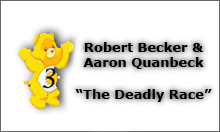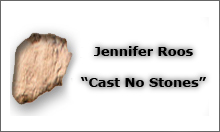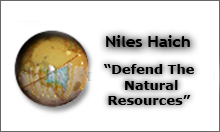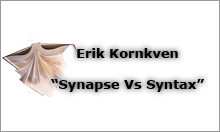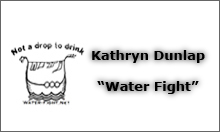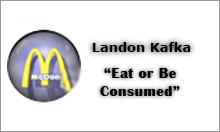Process Reflections
Ulmer
I will bear witness to this mediated scene [children beaten to death] by filling out the sting, expanding it into a chain of associations, gathering information from various discourses (news, theory, art, history), in order to map the degrees of separation between me and Bradley McGee. I am not seeing this event through a window, oriented by perspective. Such testimonials, forming a temporary (transversal) category around the event, may be mounted as part of the Web site supplement to the electronic monument (the peripheral). The form of the meditation is that of a collage or assemblage, a series of associated fragments, connected by the repetition of certain signifiers and themes. The series is interpolated into a rationale and explanation of method intended to bring out the larger implications of the experiment and make this example generalizable for others to use as a relay for their own MEmorials. The testimonial thus treats the event both as idea and as atmosphere or mood (emotion), leading up to a proposal for the materialization of the monument in a peripheral. I am meditating now on the murder of a child. (Ulmer, 2005, pp. 118-19)Brooks
The official course processes included reading and discussing all of Electronic Monuments over four weeks, one week per section of the book. We also looked at existing models, we read a draft of the essay I did with Aaron Anfinson, "Exploring Post-Critical Composition," Joyce Walker's (2007) "Narratives in the Database: Memorializing September 11th Online" and Barry Mauer's (2005) "Proposal for a Monument to Lost Data." We tried to work as a collective, always spending time in class to brainstorm and push our projects along; students orally presented their proposals, which they also turned in to me as written documents. We workshopped each project with two weeks left in the semester, and we shared and explored work on the course content management site, " The Virtual Peace Garden." Two students worked as a team, the other five worked individually. The projects progressed at very different rates, the pair generally working ahead of the rest, submitting their proposal first and developing their web presence first. Conceptually, however, other students probably hit upon and started thinking through their MEmorials more quickly than Aaron and Bob. Kathryn focused on "water scarcity" early in the process and did not adjust her topic much throughout the eight weeks we spent on the project; Jenn was quick to draw on personal experience to consider "interfaith marriage and violence," although she struggled to stay locked in on a specific focal point; Landon was fixated on the disaster-in-progress called "our economy" but slow to develop the nuts and bolts of his project; Erik, resisting Ulmer, imagined a MEmorial for the book and from early on had a concept for his peripheral, but he was slow to move the project onto the web. Niles, who had been very sure-footed in his development of a video essay during the first half of the semester, circled around topics related to the environment and then settled on a MEmorial to "natural resources," extracting a phrase from Theodore Roosevelt's autobiography.I describe their general processes because further developers and testers of this genre will need to make significant decisions about classroom management strategies and course implementation. Reading all of Ulmer was appropriate for a graduate class, but a MEmorial certainly could be developed more quickly and without the complete theoretical framework provided by the book. In a large undergraduate class, I would likely have required students to meet specified deadlines more quickly, but trusting in the experience and maturity of these students, I really wanted to leave the process and even the schedule as flexible as possible to try and see what roadblocks the memorialists might run into, and what discoveries they might make if not pushed too quickly towards a final product. In general, I can see that a fully developed MEmorial, one that takes all of Ulmer's components and suggestions into account, is not feasible in eight weeks, perhaps not even a single semester. In working through Electronic Monuments with my students, I was able to see the need to develop a stronger peripheral and emblem for my own MEmorial; in reading Barry Mauer's (2008) process description, we learned that he worked on his monument to lost data for at least two years, testing his ideas at conferences and with colleagues. Mauer and I are scholars educated at roughly the same time, in the field a similar length of time, and both of us worked for extended periods of time to fully develop our MEmorials, so any application of the genre to the classroom will need to take this germination period and the complexity of the genre into account.
Virtual Gardeners
For a more complete description of each person's process, visit the process reflection page on the class wiki; what follows is a synthesized and condense account.For students Aaron Quanbeck and Robert Becker, the process that lead to The Deadly Race began with them identifying their punctum, " the obtuse or indirect significance of an image or scene" (Ulmer 2005, p. 84). Aaron wrote on the wiki: "I recalled that one news story that caused me to feel this way was each time I heard about a child who had been left in the back seat of a car on a hot day and later found dead. These senseless deaths always seem to make me feel angry and sad all at the same time. Once I identified this emotional response to the story, I knew I had found the subject of the MEmorial I wanted to work on." Robert Becker, reflected on how as fathers, both of them could relate to the topic and its broader impact. "Kids left in cars also represents a larger issue of parenthood, which is to move from being self-focused to being other-focused." Bob traced their process of development through the reading of Mauer's "Monument to Lost Data" (2005), working through Ulmer, and eventually putting together their own project when Aaron came across the annual candlelight vigil to Dale Earnhardt, the late Nascar legend--an existing monument to which they could attach their emerging MEmorial. Collaborating on the seemingly individual nature of a MEmorial was, in their case, not a problem because of their shared values and the advantages they found in the collaborative process: brainstorming through dialogue, sharing the workload, combining their different strengths. The key to the collaboration, however, was their sense of fatherhood and their strong emotional connection to this issue.
Kathryn Dunlap, author of Water Fight, focused her project on global water shortage issues. She actually tried to avoid her initial sting: "I tried to consider other possibly directions but no other idea I had after that came remotely close to the sort of immediate electric jolt that connected me with water issues." Her project had a strong local connection--a museum with a viking ship, to which she attached her peripheral--and that anchor kept her tied to The Water Fight. Despite this connection, she reported struggles with the text: "My relationship with Ulmer's text, the bread-and-butter of this entire project, was stormy after that." She was able to overcome those misgivings, however, and eventually embraced Ulmer's guidelines. "It sounds so contrived, but I really just had to learn to trust the process and my own ability to see the patterns that emerged from these sorts of electric connections." In discovering these patterns, Kathryn was able to construct an imaginative and effective MEmorial that conveyed the message of water rights for the oppressed.
Learning to adapt Ulmer's concepts into the project was perhaps more of a struggle for Erik Kornkven, who MEmorialized the declining print culture in Synapse vs. Syntax. "The process in class was slow for me. I spent more time wrestling with the new vocabulary (e.g. electracy, deconsultation, emerAgency, Mystory, egent) than in applying those concepts to my own project." It was through grappling with Ulmer's ideas, however, that he came upon a revelation. "[I]n the process of writing out the proposal, I realized that it wasn't print culture itself that I was memorializing, but rather those values I felt we were on the brink of losing in the name of progress." Once he gained this perspective, Erik was able to adapt his memorial to illustrate what our society may be losing as we move away from print and to the digital world.
Landon Kafka's Eat or Be Eaten! embraced deconsultation; he created a Happy Meal box dealing with the dangers of capitalism for reasons other than its obvious connection to the worldwide McDonald's corporation. "I also chose this because I wanted to 'deconsult' the future, that being children. I wanted to target my MEmormial at children because really they are the only ones that can decide to change the future when it comes to such a large issue. For the most part I just wanted to bring knowledge about economic systems and the disparity between the rich and poor in a way that children would appreciate." This focus on the world's next generation was present throughout Landon's MEmorial, including a comic book filled with pictures and text showing the negative impact of capitalism run amok.
Niles Haich tried to bring a new perspective to monitoring environmental disasters in progress through Defend the Natural Resources. He initially resisted the value of monuments, but came to understand, via Ulmer, that theorizing or generating knowledge, required some of kind traveling and engagement with the world. "I now realize that the MEmorial not only serves to educate the general public, but also the one developing the MEmorial ." His image and thought process moved from an initial image of oil-covered birds, to a desire to pour oil over an individual, to finally understanding that he wanted to represent the world in chaos, which led to pouring oil over a globe as his peripheral image.
For Jennifer Roos, author of Cast No Stones, her topic of interfaith marriage became more of a struggle than she first realized, since she is a Christian married to a Muslim man. "[C]hoosing such a personal issue made the project much more difficult for me than it would have been had I chosen something political, economic, or environmental. I was constantly weighing what my Christian family or Muslim friends would think of my project. Even though I was constantly researching, I worried my assertions about faith would be taken out of context and inadvertently offend." In the end, even though she was challenged to confront the personal nature of her MEmorial, she was satisfied with the journey it took her on. "[W]hile I struggle to recall the topic of even one of the papers I wrote as an undergraduate, I doubt this project will ever be far from my heart."
What emerges from these reflections is that students found issues worth MEmorializing that they were passionate about, but they drew on problems they were already engaged with at one level or another, rather than "monitoring the news" as Ulmer suggests. Future attempts at MEmorialization might foreground monitoring the news in order to create a more surprising punctum and perhaps a more specific problem than environmental issues or a collapsing economy. Despite Ulmer's concrete suggestions and heuristics, the process for all was full of typical process messiness: changing minds, hitting walls, having doubts, and continuing on despite uncertainty. Ulmer's text itself was met with resistance, but students begrudgingly acknowledged its value when they were willing to trust the process. Aaron Anfinson (Brooks and Anfinson 2009) described his process of creating the MEmorial for Afghanistan as one of self-discovery and figuring out one's own position on a complex issue; this group of MEmorialists report a similar kind of self-discovery process. The MEmorial might be Ken Macrorie's "I-search" paper remediated and gone live.

